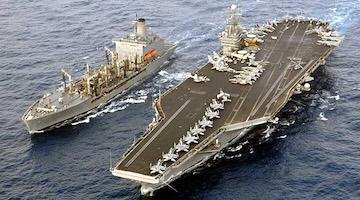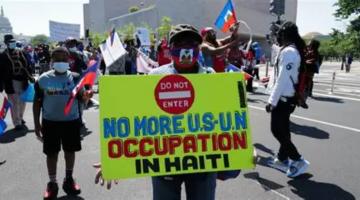The history of European colonialism and the endless U.S. desire for a military presence strengthen a Somalia secessionist movement and warfare that most people in that country do not want.
One outcome of the Somali Republic’s political collapse in 1991 was the secessionist Somali National Movement (SNM) in northern Somalia. SNM made a mission to carve out a group of states to form a new country and named it Somaliland. Leaders of the SNM have asked the international community to recognize Somaliland as an independent state but to no avail.
Support for secession has been confined to the city limits of Hargeisa, the second-largest city in Somalia and the proposed capital of Somaliland. The combination of lack of interest both nationally and globally reinforced by fierce resistance by unionists helped Somalia remain one country.
However, that may change now that the United States Department of Defense (DOD) is interested in establishing a military base in the region. In 2022, Idaho Senator James Risch proposed to recognize the self-declared country in exchange for a military base.
Senator Risch’s proposal was never seriously considered in the Senate Foreign Relations Committee’s African Affairs Subcommittee or in the full Senate. Yet, the DOD inserted language into the National Defense Authorization Act (NDAA) for the fiscal year of 2023 that directed the DOD to engage in Somaliland and submit a classified report with recommendations to Congress:
The details are listed in section 1275 of the NDAA under the heading “Report and Feasibility Study on Collaboration to Meet Shared National Security Interest in East Africa.”
Somali unionists reacted negatively. Secessionists celebrated.
The NDAA came at the worst possible time for the SNM separatists. They were in deep disagreement with one another about rules for holding elections in the self-declared country. In November 2022, different factions clashed on the streets of Hargeisa. Eight people were killed, 120 were wounded and over 1,000 were arrested.
Then there was an uprising against the secessionists in Las Anod, the capital of Sool. Sool is one of the states that secessionists want to include in the proposed new country, but its residents want nothing to do with seditious conspiracy.
These ongoing twin crises bring the separatist region into focus. The election deadlock in Hargeisa and the uprising in Las Anod are two separate but interlinked events.
SNM leaders and supporters disagree on how to proceed with elections for areas fully in their control. The dispute over the election is a function of the level of fervor for the conspiracy to split Somalia. There is less passion for separatism in other cities outside of Hargeisa.
The atmosphere in Hargeisa is the result of a false political narrative. Career politicians and business tycoons promote a colonial-era folktale that Somalia and Somaliland were two countries prior to the formation of the Somali Republic on July 1, 1960.
This idea is baseless. It mischaracterizes how Somalia was divided and subdivided under the 1884-1885 Berlin Conference where Europeans set the trajectory for Africa.
Somalia was divided into five territories. Britain controlled three including today’s Eastern Ethiopia, Northern Kenya, and the British Protectorate of Somaliland, hence the name. Italy colonized the southern region including Mogadishu. France controlled today’s Djibouti.
Britain and Italy decided to combine northern and southern states to form the new Somali Republic. The 19th-century colonizers and today’s imperialists failed to coordinate an exact date for the independence for the new nation.
The failure to agree on an exact date for the launch of the new republic was a function of each colonizing nation’s political culture. Britain valued a speedier decision in comparison to Italy.
The disagreement led to four days difference between the northern states of Somalia gaining independence on June 26th and the southern states becoming free on July 1st, 1960. The Somali Republic was born with Mogadishu as its capital.
The colonizers never intended to create two countries. It was not the intention in 1960 and there is no support for it today.
It is crucial to understand this history. Leaders in the secession movement used colonial intent as the bases for splitting Somalia. But it is a misconstrued version of colonial history.
The uprising and the brutal crackdown that followed at the beginning of January 2023 in Las Anod have a completely different root cause. The struggle is between secessionists and unionists.
The separatists are based in Hargeisa. The violence is being orchestrated from this city. Arms, funds, and other supplies are shipped from Hargeisa.
The unionists are mostly civilians, locals, and unarmed. They wave the Somali flag and want nothing to do with separatists.
More than 30 people were killed and nearly 100 wounded in Las Anod. Many more were arrested and shipped to the notorious Mandeera prison on the outskirts of Hargeisa.
Secessionist militia cut off electricity and telecommunication to the city. More troops including the Rapid Response Units (RRU) which are trained, equipped, and paid by the former British colonizers were deployed to Las Anod.
The uprising by unionists has succeeded thus far. Most secessionist armed groups withdrew from Las Anod. Residents of the city are organizing and forming local administration.
The situation is intense in Las Anod. Secessionists in Hargeisa feel emboldened by the NDAA and the weak response by Somalia President Hassan Sheikh Mohamud. More violence is feared.
Mohamud has given convoluted and confusing responses to the situation. In September 2022, Mohamud told Somalis in America that he does not support splitting Somalia. In the same breadth, he declared that he plans to do nothing to stop the progression of Hargeisa functionally seceding.
It is a position that encapsulates duality. It gave unionists a head fake and emboldened secessionists.
Mohamud was verbalizing a confederation position. The confederation framework essentially accepts two functionally parallel countries.
An announcement of a new nation is not necessary for confederation abstraction. Accordingly, two countries can functionally exist in one. There is plenty of evidence supporting this in Mohamud’s record.
Mohamud was Somalia’s president from 2012 to 2017. He entered into a series of agreements with Hargeisa. The economic and political context of those agreements illustrates confederation.
Claire Elder, who lectures in International Relations and Global Conflicts at the University of Melbourne, highlighted Mohamud’s first-term legacy in a brief report published on June 6th, 2021. “While Somaliland has always received less aid than Somalia, the 2013 special arrangement, awarded as part of the New Deal Compact with the federal government of Somalia, provided access to funding from the EU and other donors earmarked for security, trade, and resilience.”
The New Deal Compact agreement came about after a series of meetings between Mogadishu and Hargeisa mediated by foreign countries under Mohamud’s leadership. Many of the details in the agreement were kept secret from Somali citizens.
Some of the functional concessions in the New Deal Compact were reversed by Mohamed Abdullahi Mohamed, who is known as Farmaajo. The New Deal Compact raised sovereignty concerns according to Farmaajo. Donors obliged and all funds for Hargeisa were passed through Mogadishu.
An example is the $12 million allocated to Hargeisa who refused to collect over concerns of political optics. It took a tragic fire that burned the main Waheen market for the political class to relent and accept the funds.
Mohamud considered the New Deal Compact one of his signature accomplishments during his first stint. The quoted provision along with others in the report illustrates a path to a pseudo-sovereign country in Hargeisa.
Mohamud has responded to both the election violence in Hargeisa and the Las Anod uprising. Neither of his responses were effective or adequate.
Mohamud is unlikely to rise to the occasion and address the Somaliland problem that’s currently confined to Hargeisa. He squandered other opportunities to rally the nation around common values and struggles. Mohamud grossly mismanaged the fight against Al Shabaab, the East African branch of Al Qaeda. He will most likely squander the opportunity to address secessionists in Somalia as well.
The Somali public already rejected Mohamud’s puppet government and the ineffective response to the violence perpetrated by secessionists. The United States is on track to interfere in Somalia again with possibly another Black Hawk incident which could be used to justify an imperialistic transaction rather than developing a symbiotic relationship between two nations.
Jamal Abdulahi is a Technology Entrepreneur and longtime civic leader. Follow him @fuguni.



















